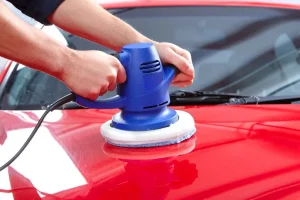Properly cleaning your car is essential to maintain its appearance and extend the life of your paint. A good car wash isn’t just about washing away dirt; it’s also about using the right techniques and products to ensure a thorough clean without causing damage. This article will guide you through the proper car washing techniques to keep your car looking spotless.
Learn the basics of car washing
Why washing your car properly is important
Washing your car properly removes dirt and contaminants that can damage your car’s paint and finish. It helps maintain the value of the car and makes it look great on the road.
Common mistakes to avoid
Avoid using household cleaners, cleaning in direct sunlight and using abrasive materials. These mistakes can damage your car’s paint and cause scratches and swirls.
Essential car wash supplies
Choose the right soap
Always use soap specifically designed for cars. These soaps are pH neutral and gentle on car paint, unlike household cleaners that remove protective wax.
Microfiber towels and gloves
Microfiber towels and car wash gloves are soft and absorbent, reducing the risk of scratching your car’s surface. They effectively remove and absorb dirt, making the car washing process safer and more efficient.
Bucket and sand shield
Using two buckets (one for soapy water and one for rinsing) will prevent dirt from re-entering the surface of your car. A sand screen at the bottom of the bucket catches dirt particles and keeps them away from your gloves.
Detail brushes and sponges
Detail brushes help clean hard-to-reach areas, such as around badges and trim. To scrub stubborn dirt, you can use a sponge, but make sure it is soft and non-abrasive.
Step-by-step car washing techniques
Preparing for car wash
Before washing your car, make sure your car is parked in the shade to prevent water damage. Gather all your supplies and fill one bucket with soapy water and another with clean water.
pre-rinse
Start by flushing the car with a hose or pressure washer to remove loose dirt and grime. This step helps prevent scratches during cleaning.
double barrel method
Soak car wash gloves in soapy water.
Wash one part of the car at a time, starting from the top and working your way down.
Rinse the gloves in a bucket of clean water before refilling them with soapy water.
Clean panels and windows
Use gentle linear movements instead of circular movements to reduce the risk of swirling. Pay special attention to areas with more dirt, such as the lower dashboard and rear bumper.
Clean wheels and tires
Use separate brushes or gloves to clean wheels and tires to prevent cross-contamination. Clean one wheel at a time, scrubbing the tires, rims and wheel wells thoroughly.
Rinse and dry
After you have washed the entire car, rinse it one last time to remove any soap residue. Use a clean, dry microfiber cloth to dry the car, starting at the top and working your way down. Drying helps prevent water spots and stains.
Advanced car wash technology
Use a foam gun
The foam gun attaches to the pressure washer and covers your car with a thick layer of foam. This foam helps loosen dirt, making subsequent cleanings more effective.
clay bar treatment
A Clay Bar treatment removes embedded contaminants that regular cleaning cannot remove. Coat the surface of your car with clay bar lubricant, then gently rub the clay bar over the paint. This process makes the paint smooth and clean.
Polishing and waxing
Polishing removes minor scratches and swirls, while waxing adds a layer of protection. Use a dual-action polisher or hand polish, then apply a premium car wax for a deep shine and protection.
Eco-friendly car wash tips
Save water
Use a shut-off nozzle on your hose to regulate water flow and reduce waste. Consider using waterless car wash products for a quick clean without the need for water.
biodegradable soap
Choose biodegradable car wash soap that is friendly to the environment. These products break down naturally, reducing their impact on water resources.
Wash your car on grass or gravel
Washing your car on grass or gravel absorbs water into the soil, reducing runoff to storm drains and reducing your impact on the environment
Was my car?
It is recommended to wash your car every two weeks, but the frequency may vary depending on your driving conditions and environment.
Can I use dish soap to wash my car?
No, dish soap removes the protective wax and damages the paint. Always use soap specifically designed for cars.
Is it safe to wash your car in the sun?
It is best to wash your car in the shade to prevent the water and soap from drying out too quickly and leaving stains and streaks.
How do you prevent water stains when washing your car?
Dry the car immediately after rinsing with a clean, dry microfiber cloth. Washing in the shade also helps prevent water spots.
What are the benefits of using a foam cannon?
A foam gun sprays a thick layer of foam that helps loosen and remove dirt from your car’s surface, making the cleaning process more effective and reducing the chance of scratches.
Should I wax my car after every wash?
Waxing every two to three months is sufficient to maintain protection and shine. Regular washing preserves the wax between uses.
finally
Good car washing techniques are essential to maintain the appearance of your car and protect its paint. By using the right products and methods, you can achieve a thorough, scratch-free cleaning that will keep your car looking its best. Whether you choose to hand wash or use advanced tools like foam guns and clay sticks, following these techniques will ensure your vehicle is sparkling and well maintained.
====================================

